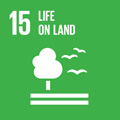- Docente: Silvia Ghesini
- Credits: 4
- SSD: BIO/05
- Language: Italian
- Teaching Mode: In-person learning (entirely or partially)
- Campus: Bologna
- Corso: First cycle degree programme (L) in Natural Sciences (cod. 8016)
Course contents
Morphology, anatomy and physiology
Head: mouthparts, eyes, ocelli, antennae
Thorax: prothorax, mesothorax, metathorax, legs, wings
Abdomen and its appendages
Integument. Respiratory, circulatory, nervous, digestive, endocrine, excretory and reproductive systems
Life cycle and ecology
Postembryonic development, moult and metamorphosis. Apterygota, Exopterygota, Endopterygota
Feeding. Insects and plants. Insects and other animals. Insects and man.
Systematics
Entognatha: Protura, Diplura, Collembola. Insecta: Archaeognatha, Zygentoma, Ephemeroptera, Odonata, Orthoptera, Phasmatodea, Embioptera, Plecoptera, Dermaptera, Mantodea, Blattodea, Isoptera, Psocoptera, Phthiraptera, Thysanoptera, Hemiptera, Hymenoptera, Coleoptera, Neuroptera, Trichoptera, Lepidoptera, Mecoptera, Siphonaptera, Diptera.
Conservation
Main threats. Protection and management criteria. Examples of insect species of conservation interest.
Readings/Bibliography
Gullan P.J., Cranston P.S. (2005 or following editions) The Insects, an outline of entomology, Wiley-Blackwell.
Chinery M. (2012) Insects of Britain and Western Europe. A&C Black.
Teaching methods
Lectures, observations of live insects and preserved specimens, field trips.
Teaching and assessment methods can change if required by national health provisions.
Assessment methods
Written test (15 questions needing short answers) followed by an oral test based on a discussion of the written test and on the identification of insects (photos or specimens).
Teaching tools
PC, slide projector, preserved insects
Office hours
See the website of Silvia Ghesini
SDGs


This teaching activity contributes to the achievement of the Sustainable Development Goals of the UN 2030 Agenda.
